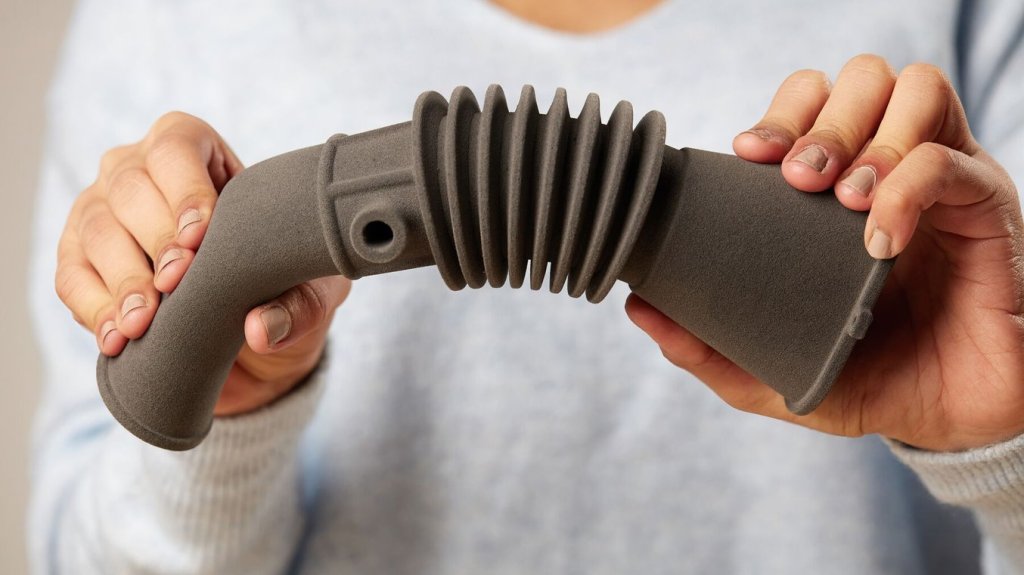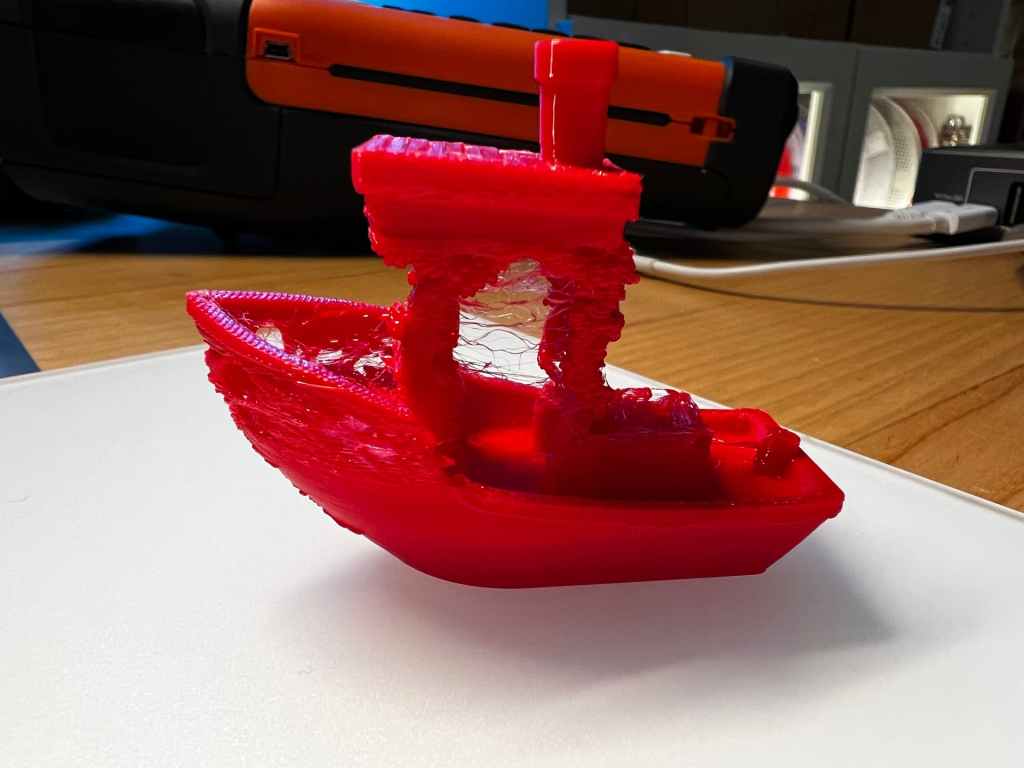3D printing revolutionized the world of designers, engineers and hobbyists in ways we never thought were possible. And to make everything more exciting, we have discovered that we can use different materials to realise our creative and functional aspirations. Among these, Thermoplastic Polyurethane (TPU) stands out due to its unique properties and versatility. TPU filament is a flexible, rubber-like material that is significantly different from more rigid substances such as PLA or ABS. This flexibility opens up a multitude of applications that benefit from its shock absorption and elastic characteristics.
What is TPU Filament?

TPU, or Thermoplastic Polyurethane, is a type of elastomer; an elastic, rubber-like material that can be stretched and flexed repeatedly. It is a block copolymer composed of soft and hard segments that provide both flexibility and structural integrity. This unique structure allows TPU to be used in both everyday consumer products and more demanding industrial applications.
Properties and Characteristics
TPU’s properties can be adjusted by altering the ratio of hard to soft segments. This versatility of the TPU filament leads to a wide range of hardness levels, measured in Shore values (from softer, like gel shoe insoles, to harder, like outer soles of boots). Key properties of TPU include:
• Elasticity: Returns to its original shape after stretching or compressing.
• Abrasion Resistance: Highly resistant to wear and tear, making it ideal for products subjected to friction.
• Impact Resistance: Absorbs impacts efficiently, protecting devices or objects from damage.
• Transparency: Can be manufactured to be clear, which is useful for certain product applications.
• Chemical Resistance: Withstands exposure to oils, greases, and various solvents.
How Does TPU Filament Work in 3D Printing?
TPU filament is used in fused deposition modelling (FDM) or fused filament fabrication (FFF) 3D printers. Here’s how it typically works:
1. Heating: The TPU filament is fed into a heated nozzle of the 3D printer, melting it.
2. Extrusion: The melted TPU is extruded through the printer’s nozzle onto the build platform.
3. Layering: The printer deposits the TPU layer by layer, where it cools and solidifies to form the final object.
4. Adhesion and Flexibility: Special attention needs to be paid to bed adhesion and print speed, as TPU’s flexibility can make it challenging to work with compared to stiffer materials.
Benefits of Using TPU in 3D Printing

Flexibility and Elasticity
One of the primary advantages of TPU filaments is their flexibility and elasticity. Unlike rigid materials such as PLA or ABS, TPU can stretch and bend without breaking. This makes it an ideal choice for creating parts that require significant flex such as phone cases, wearable devices, and other items that must endure bending and twisting during their use. This flexibility does not compromise its strength, ensuring that products are not only flexible but also durable.
Durability and Impact Resistance
TPU is exceptionally resistant to impacts, abrasions, and wear, making it suitable for producing parts that must withstand harsh environments or mechanical stress. For instance, TPU is often used in the automotive industry for parts like vibration-dampening covers, protective gears, and non-slip mats due to its ability to absorb impacts and resist wear over time. Its durability also makes it a favoured material for creating parts that are exposed to chemicals or variable temperatures.
Chemical Resistance
Another significant advantage of TPU is its resistance to oils, greases, and many solvents, which makes it an excellent material for applications in the automotive and industrial sectors where chemical exposure is common. This resistance ensures that parts made with TPU maintain their integrity and functionality even when in contact with harsh substances.
Thermal Stability
TPU exhibits good thermal properties, maintaining its flexibility and structural integrity over a wide range of temperatures. This thermal stability is crucial for applications in environments subject to temperature variations, such as outdoor applications or parts within vehicles. TPU can typically handle temperatures from -20°C to 80°C, making it versatile across various thermal conditions.
Ease of Printing
Despite its elasticity, TPU is relatively easy to print compared to other flexible filaments. While it generally requires a direct drive extruder to prevent issues such as buckling in the extruder, modern 3D printers and optimized printing settings have made it increasingly feasible to achieve high-quality prints with TPU. The filament adheres well to the printing bed, and issues like warping are much less prevalent than with materials like ABS.
Water Resistance
TPU’s water resistance adds to its array of functional applications. Products exposed to moisture or that need to be waterproof benefit immensely from TPU’s ability to repel water, such as in the case of containers, housings for electronic devices, or outdoor sporting goods.
Aesthetic Qualities and Customization
TPU not only stands out for its mechanical and physical properties but also offers aesthetic versatility. It is available in various colours and finishes, which can be utilized to create visually appealing designs. Its smooth surface finish and ability to detail make it excellent for both functional parts and prototypes that require a refined look.
Applications of TPU Filament
TPU’s range of properties makes it suitable for various applications, including:
• Protective Cases: Phone, tablet, and laptop cases benefit from TPU’s shock-absorbent and durable characteristics.
• Wearable Devices: Straps for smartwatches or fitness trackers utilize TPU’s skin-safe and flexible properties.
• Medical Devices: TPU is used in airways, catheters, and other medical tubing due to its flexibility and biocompatibility.
• Automotive Parts: Seals, gaskets, and hoses made from TPU can withstand vibrations, impacts, and automotive fluids.
• Sporting Goods: Footwear components, such as insoles and outer soles, utilize TPU for its durability and comfort.
Challenges of Printing with TPU
Despite its advantages, 3D TPU filament presents some challenges in printing:
Stringing and Oozing: Due to its elasticity, TPU can cause stringing between print parts, requiring careful adjustment of retraction settings.
Printer Requirements: Not all 3D printers are capable of printing with flexible filaments like TPU. Those used must typically have a direct drive extruder or specific modifications to handle the material.
Print Speed: Printing speed must be reduced to ensure the accuracy and quality of prints due to the material’s flexibility and tendency to buckle if extruded too quickly.
Takeaway
Thermoplastic Polyurethane filament represents a significant advancement in the capabilities of 3D printing technology, combining flexibility with strength and durability. Its use across diverse industries demonstrates its versatility and efficiency. Although it poses some printing challenges, the benefits of using TPU in prototyping and final product applications make it an invaluable material in the 3D printing arsenal. As technology progresses, we can anticipate even greater uses and improvements, making it a cornerstone material for both current and future 3D printing applications.
